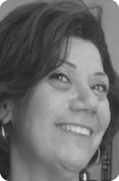
The Eye Institute of Utah in Salt Lake City has an interesting pedigree that helps inspire its daily operations and glowing reputation. Early in its history, under the leadership of Andy Lyle, MD, the Institute was the site of many of the country’s firsts in modern ophthalmic surgery. Today, it is helmed by Robert J. Cionni, MD, who earlier in his career was the medical director of the Cincinnati Eye Institute, one of the country’s largest and most prestigious privately owned clinics and surgery centers dedicated solely to ophthalmology.
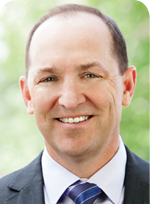
Dr. Cionni combines his experience and perspective as the head of a state-of-the-art ophthalmic urban institution with the goal of treating every patient like family. The result is the Eye Institute of Utah—a small- to medium-sized multispecialty practice that uses big-city know-how and small-town attitude, along with a dedicated and caring staff, to provide cutting-edge care in a way that turns specialty-care consultations into lifelong patients.
FAMILIAL PHILOSOPHY
When Dr. Cionni began his work with the Eye Institute of Utah in 2008, it was a LASIK-heavy practice. With the rise of refractive cataract surgery, he directed the practice’s momentum toward premium refractive cataract surgery, so changes were afoot from the moment he stepped through the door. “It took a little while to refocus the practice,” he says, “but the philosophy remained the same throughout the transition. Combine the best technology with the best personnel, and then treat all patients like they are special—because they are.”
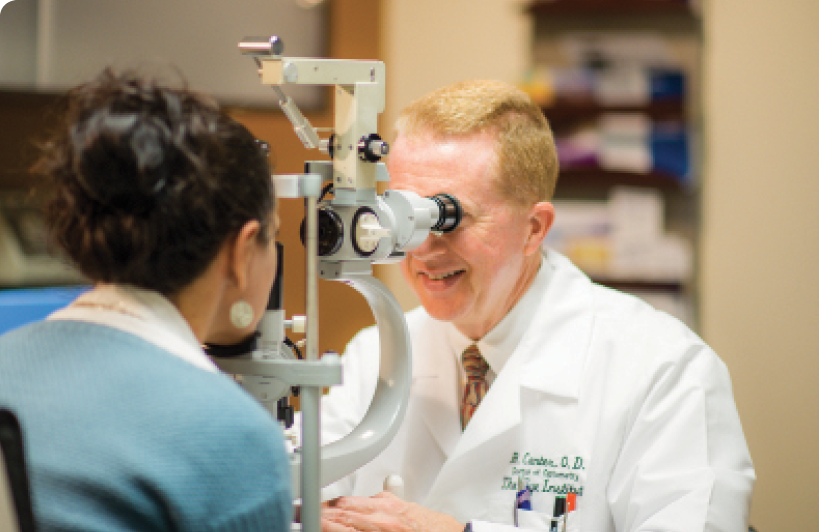
“The basic tenet by which we practice is to imagine that each patient is our mom, dad, brother, or sister,” says Dr. Cionni. “With the myriad of eye care concerns and the variety of personalities and social factors, managing patients can become quite challenging [see Challenging Times]. Too often, we see health care providers unintentionally dehumanize patients in order to get through the day. If, however, you imagine that each patient is a family member, you will always treat them with respect and put their best interests first. This is the first step in building a successful practice.”
A patient-first philosophy is a great foundation upon which to build. “We surround ourselves not only with excellent physicians but great technology,” says Dr. Cionni. “Every physician in the practice stays on top of the newest technologies, is involved actively in clinical research, and many of them are involved in the American Society of Cataract and Refractive Surgery through clinical committees, so they stay abreast of the most current issues. In those roles, they’re able to help direct where ophthalmology is going, and that’s powerful.”

Investing in the best technology is a key factor as well. “Although we are never afraid to invest in promising new technology,” says Dr. Cionni, “we take the time to fully understand it before offering it to our patients to be certain it will enhance their experiences and their outcomes.”
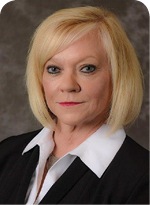
Karen Bachman, certified ophthalmic executive and practice administrator of the Eye Institute of Utah, attributes the success of the practice to the leadership and vision of its physicians and their willingness to investigate and use advance. She says the practice constantly evaluates and adopts new technology when they believe it is in patients’ best interest. “We believe that it’s necessary to stay current with new technology in order to provide our patients with the best possible care. This also provides the practice with the opportunity to remain competitive, and to be considered a ‘best practice’ in its community,” says Ms. Bachman, vice president of the American Society of Ophthalmic Administrators.
Challenging Times
“I firmly believe that, if you are not on the cutting edge, you will be left behind,” she says. Her perspective is supported by 30-plus years working her way up the ophthalmic ladder. Ms. Bachman started as a front-desk employee in an ophthalmology practice. She earned her COT degree and then moved on to the Cincinnati Eye Institute ,where she became clinical director after earning her COM. All of this culminated in her leadership role at the Eye Institute of Utah.
“It’s a different patient mentality these days,” says Ms. Bachman. “Patients investigate practices. They’re on the Internet no matter what age they are, looking for information about doctors, and they’re also investigating what kind of equipment the various practices have. They look for someone who is offering the newest technology, whether that’s a femtosecond laser or the newest options for performing diagnostic tests.” (The Eye Institute of Utah is home to the world’s first commercially available femtosecond laser for customized refractive cataract surgery and the ORA with VerifEye intraoperative aberrometry system [Alcon], which helps in determining optimal IOL power choice and improve outcomes when implanting toric IOLs.) “It’s crucial to remain current. Always keeping in mind, however, that ultimately you want to invest in the best technology because it is in the best interest of the patient and never simply to acquire a new gadget,” Ms. Bachman adds.
STAFF AFFECTION
The best technology is just nuts and bolts (and optics and lasers) without talented physicians and dedicated staff to bring it to life. “Most importantly,” says Dr. Cionni, “we surround ourselves with great doctors and awesome staff.” With its clinic on the first floor and an independent ophthalmic surgery center (the Surgicare Center of Utah) on the second floor, the facility employs 68 people, including four full-time ophthalmologists, one part-time oculoplastic surgeon, one part-time retina surgeon, one optometrist, and several dozen ancillary personnel.
“When I first arrived, it was not uncommon to hear some of the staff members say, ‘We didn’t have to do all this additional testing before Dr. Cionni got here. Why do we have to do it now?’ Well, suffice it to say that the people who said that don’t work here anymore. Instead, we have people whose primary focus is respectful care for the patients,” he says. “Now every single day, I’ll get spontaneous comments from patients who remark about what a wonderful staff we have and how they are made to feel like a member of the family. Fostering that kind of an attitude in our staff has really helped this practice to be successful.”
Ms. Bachman points out that part of that staff dynamic results from investing in employees and fostering their training and education so they are engaged in their work (see Personnel Pearls). “I’m a big promoter of education,” she says. “I believe in having a fully certified clinical team, and those who aren’t certified are working towards certification as a COA, COT, or COMT. That really gives the employees a career and not just a job and makes them think of their position differently.”
Another benefit to employees’ working toward certification is that they remain up to date. “That doesn’t mean just staying current with technology but also on the regulatory items such as [electronic health records], meaningful use, billing, and coding. These are functions that can [have a great effect on the] practice and revenue stream,” she says.
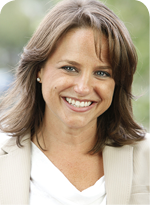
It takes a dedicated and knowledgeable staff to sufficiently address the divergent ophthalmic needs of an entire region. In addition to being a go-to facility for residents of Salt Lake City and other locations throughout Utah, the Eye Institute routinely draws patients daily from several neighboring states. “Salt Lake City is urban, but the state and the region are rural. It is very common for us to get patients from Idaho, Wyoming, Colorado, Arizona, and Nevada on a daily basis,” remarks Helen Cionni, who is the marketing director of the Eye Institute and the administrator of the Surgicare Center as well as Dr. Cionni’s wife and a long-time ophthalmic-industry veteran.
Partnering with a vast network of optometrists is one way the practice addresses this dynamic; sensitive and thoughtful scheduling is another. “We feel very strongly about partnering with optometrists for shared care,” says Mrs. Cionni. “We can do a full examination and all of a patient’s testing in the morning, and then we’re staffed such that we can do the surgery that afternoon or the following day. We are then able to send the patient back, and the comanaging doctor stays in touch with us and follows that patient to make sure that the postop results are what we expect.”
Mrs. Cionni remarks that performing the second eye surgery within a few days, providing the first eye is clinically stable, accommodates cataract patients who travel a lengthy distance. ”It’s convenient because they only have to spend one or two nights in a hotel, but another less obvious benefit is that they’re on the same postop schedule for both eyes, so our compliance rate with postop medication is higher with these patients,” she explains.
The Cionnis committed to the formerly LASIK-centric practice in 2008 at the peak of the recession, when discretionary income was woefully low and LASIK numbers were falling fast. “We had to buckle down, tighten the budgets, and fix quite a few things,” says Mrs. Cionni. Catering to more than the ophthalmic needs of their patients, such as designing a surgical schedule around their travel plans, is part of the practice’s agenda. “We want patients’ experiences to be the best possible, from the moment they pick up the phone to call us to the time that they are fully recovered and happy with their surgical result,” she says.
Personnel Pearls
SELLING THE RESULT
Although the Eye Institute’s patients generally trend toward the 50-plus demographic, and many have been repeat clients for years, it still takes dedicated marketing efforts to keep the clinic and OR humming. “From a marketing perspective, our philosophy is education, education, education. We want the patients to fully understand what their condition is and all options available to manage their condition,” says Mrs. Cionni.
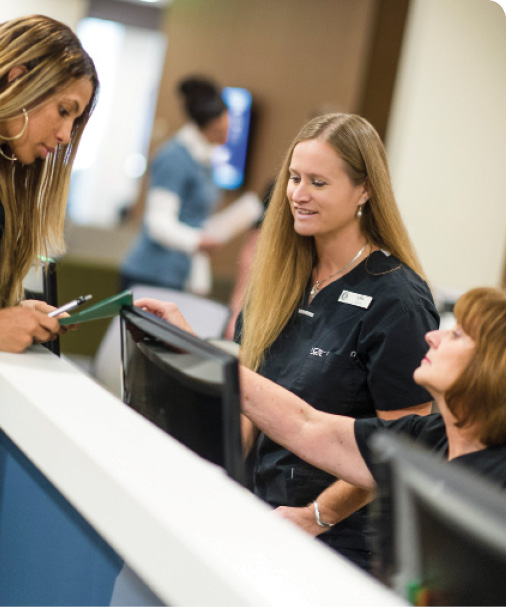
The Eye Institute is in a competitive marketing environment, according to Mrs. Cionni, so she says choosing which marketing strategies to employ must be done tactically. She explains, “We like to take an educational approach so that our patients have all the information that they need to make an informed decision. We utilize a lot of advertorial-style advertising, sometimes taking out an entire page in the local newspaper. We use the space to help educate and broaden the understanding of what vision-correction options patients have. Interestingly, newspapers are still pretty popular in this town. They also send every potential surgical patient a packet in the mail explaining his or her condition, the possible surgical options, and potential outcomes so patients can have a truly informed conversation with the doctor, she adds.
BENCHMARKS AND PATIENTS’ SATISFACTION
Achieving top-notch outcomes and gaining patients’ respect and referrals are the goals. “Monitoring patient outcomes is necessary to provide superior patient care,” says Ms. Bachman. “Even if your patient is satisfied after cataract surgery, if you missed your target, you need to investigate why.”
Ms. Bachman points out that, when you are looking at outcomes, it is not all about numbers and statistics; it is also about patients’ satisfaction. “You could have nailed the surgery, you could have done everything perfectly,” says Ms. Bachman, “but if [he or she] was not happy with the scheduling process, the front desk, or any of the other steps in the process, you could still have created an unhappy patient.”
Rochelle Nataloni
• freelance medical writer with 25 years’ experience specializing in
eye care, aesthetics, and practice management
• (856) 401-8859; rochellemedwriter@gmail.com; Twitter @JustRochelleN; www.linkedin.com/in/rochellenataloni


